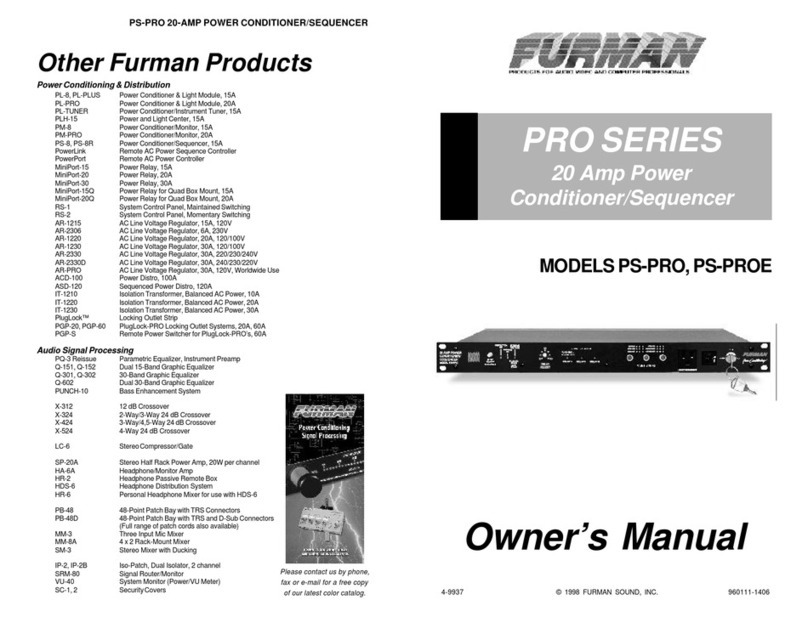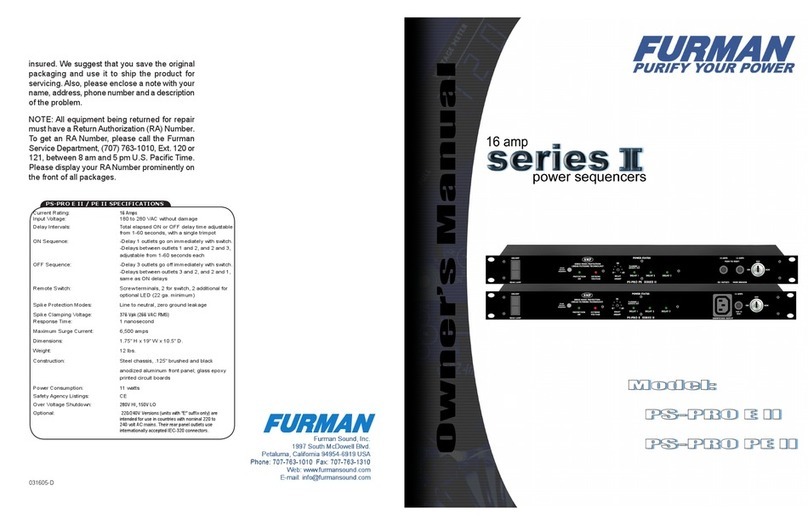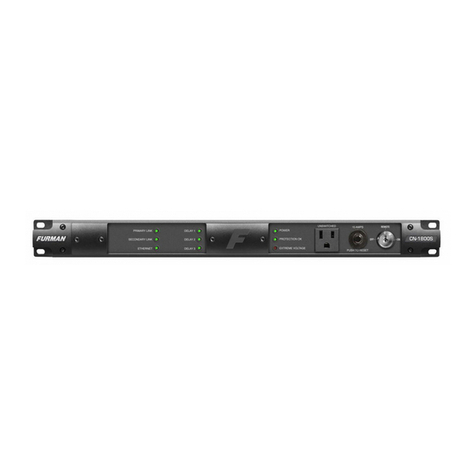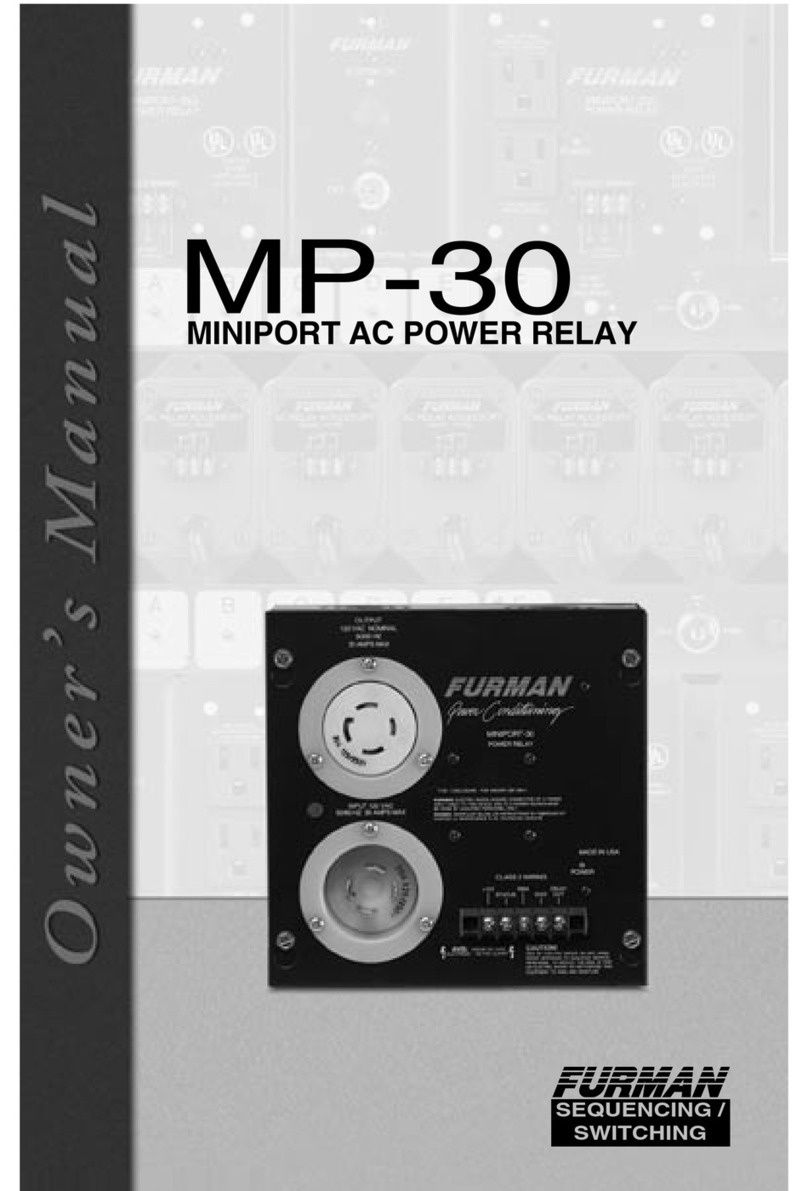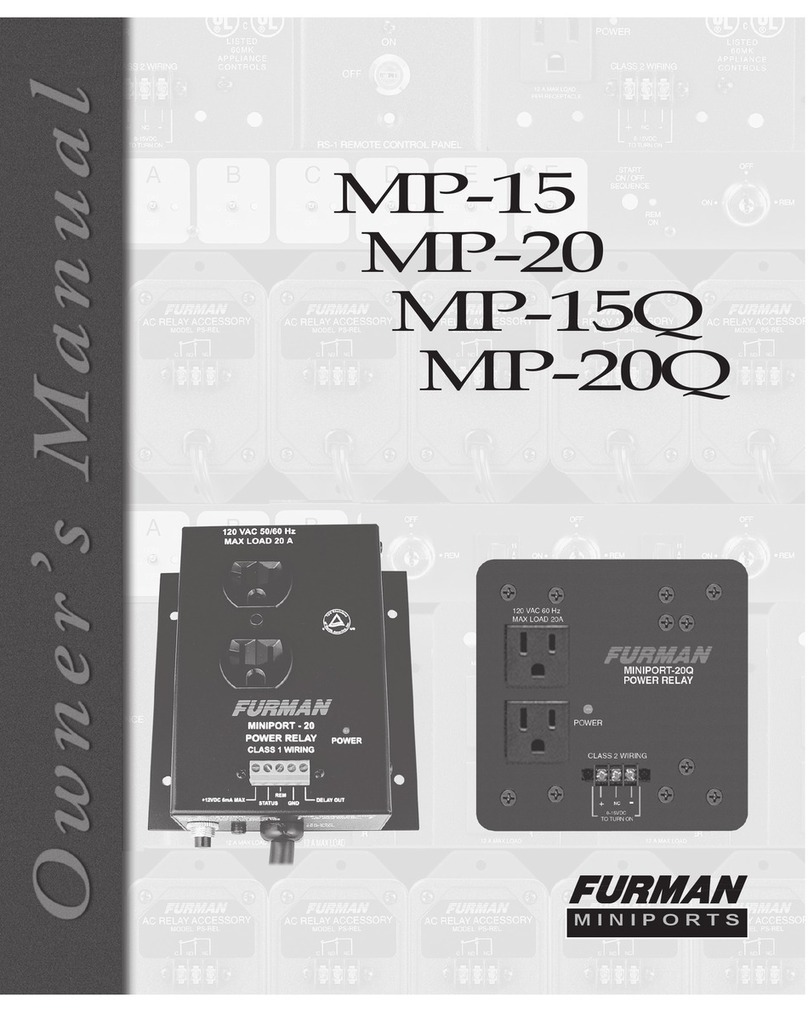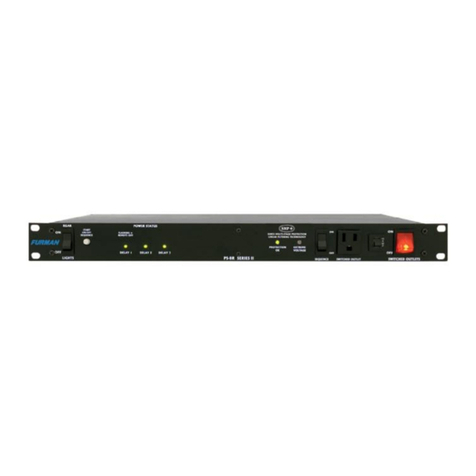DESCRIPTION
The Furman PowerLink is a compact, low-cost
rackmount Remote Sequencer that provides
timing for up to six power control devices, turning
them on and off in a preset seq uence. The delay
interval between the turn-on or turn-off of each
device and the next in sequence is user-
adjustable via an internal trimpot.
PowerLink can work with a group of relay-con-
trolled circuits such as Furman MiniPorts, to
create a very exible power control system that
can expand to handle as many circuits carrying
as much current as needed.
An on or off sequence can be initiated from the
PowerLink itself, using the built-in high-security lock-
ing key switch, or, if the key switch is set to enable
Remote operation, by one or more momentary or
maintained-action switches in distant locations.
The outputs of the PowerLink are low power relay
contacts, accessible through rear-panel screw
terminal strips. Outputs may be congured to
be normally-closed or normally-open by internal
jumpers. All input and output commons are
electrically isolated to avoid the creation of ground
loops.
Power sequencing is needed whenever various
kinds of equipment must be powered up or down
in groups, rather than all simultaneously. In audio
systems, sequenced powering is often necessary
to allow turn-on transients from low level pream-
pliers and processors to settle down before any
power amps are turned on. This is because
simultaneous powering can result in a loud, an-
noying, and potentially destructive “pop” reaching
the speakers. In any large system whose com-
ponents present an inductive load to the AC line
(including electric motors, power supplies, and
power ampliers of all kinds), sequenced power-
ing can avoid excessive inrush currents that can
cause circuit breakers to trip even though the
steady-state currents are not excessive.
The PowerLink’s front panel provides a three-
position switch for each control output that al-
lows each control output to be part of the power
up/down sequence, or to remain on or off apart
from the sequence. It also provides an LED that
indicates when the circuit in on.
The outputs of the PowerLink are low power relay
contacts, which can control Furman PowerPorts,
MiniPorts, PS-PRO and PS-8R Power Sequenc-
ers, or any other circuits that need to know when
a particular time delay has elapsed. In larger
systems, one or more additional PowerLinks can
be installed in remote locations and operated via
low-voltage control wiring, providing the capability
of controlling power sequencing for a system of
any size.
CONTROLLING ON/OFF
SEQUENCE
A normal, time-delayed on or off sequence may
be initiated in either of two ways: locally, via the
front panel key switch, or remotely, via a remotely
located maintained or momentary switch connect-
ed to the PowerLink’s rear panel terminal strip. In
addition, the behavior of any individual circuit may
be overridden by its corresponding front panel
ON/SEQ/OFF toggle switch.
The PowerLink’s control circuits turn on the circuits
in order from A to F when sequencing on, and
turn the circuits off in the reverse order from F to
A when sequencing off. The time for each step is
internally adjustable with a trim pot, with a range
of 0.2 to > 12 seconds per step. (Total time for the
entire sequence is from 1 second to > 1 minute).
Local control: Turning the key to the ON (or possi-
bly REM) position initiates an on sequence. Please
3

